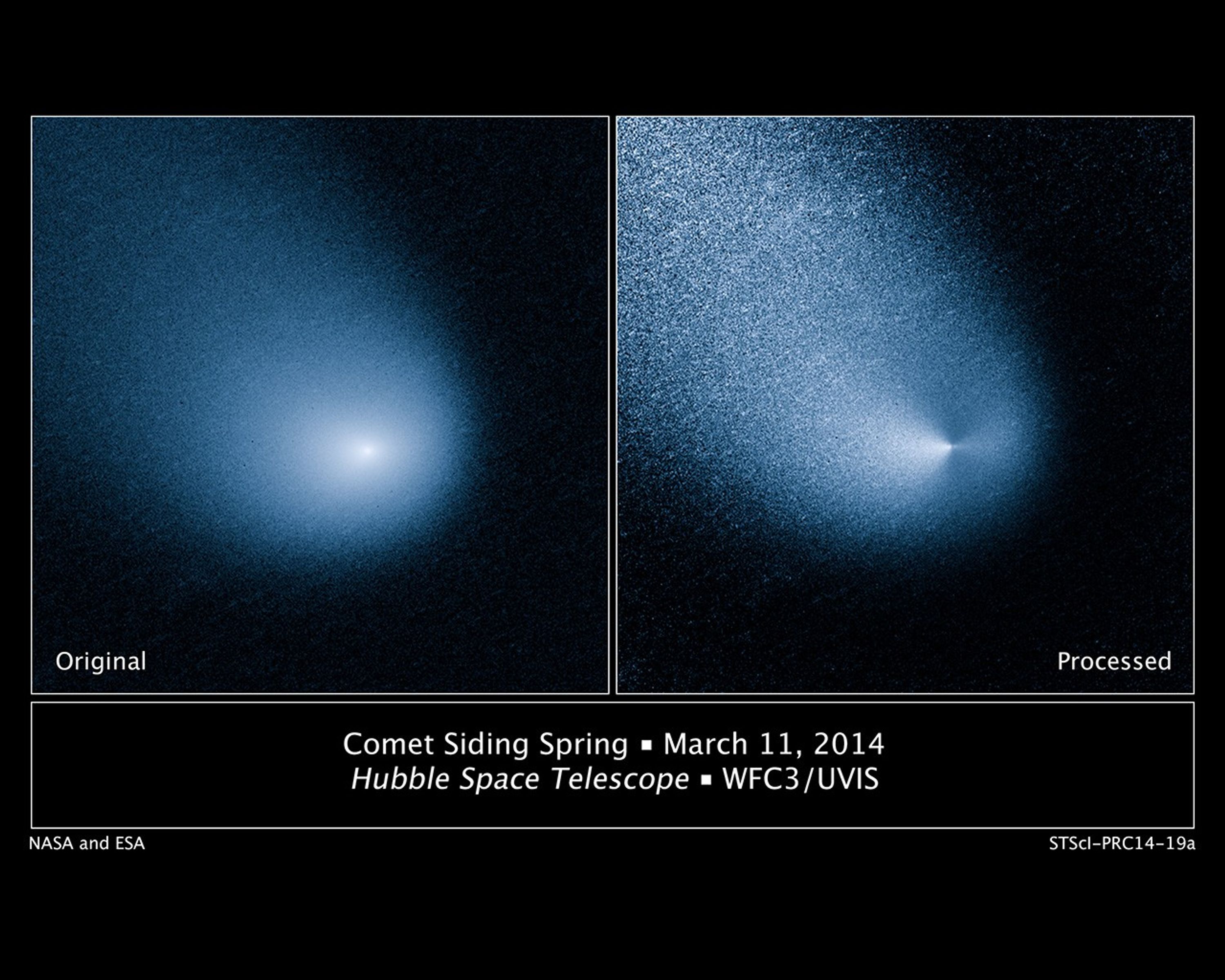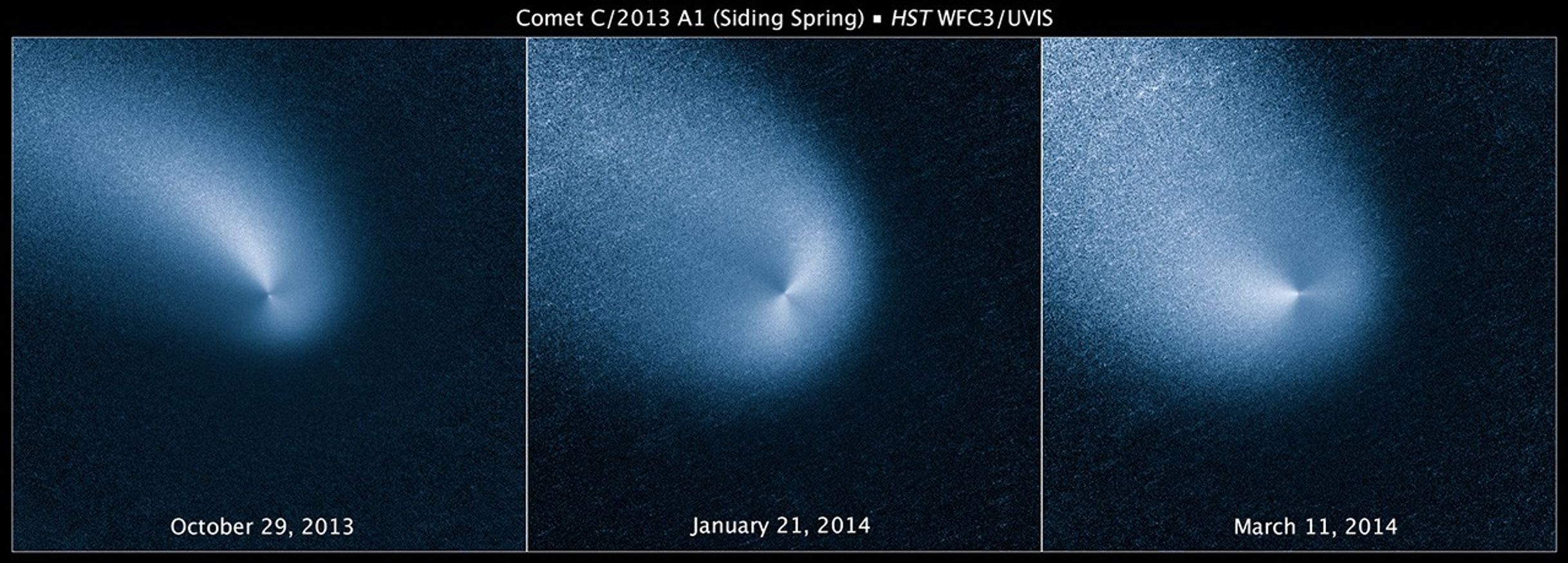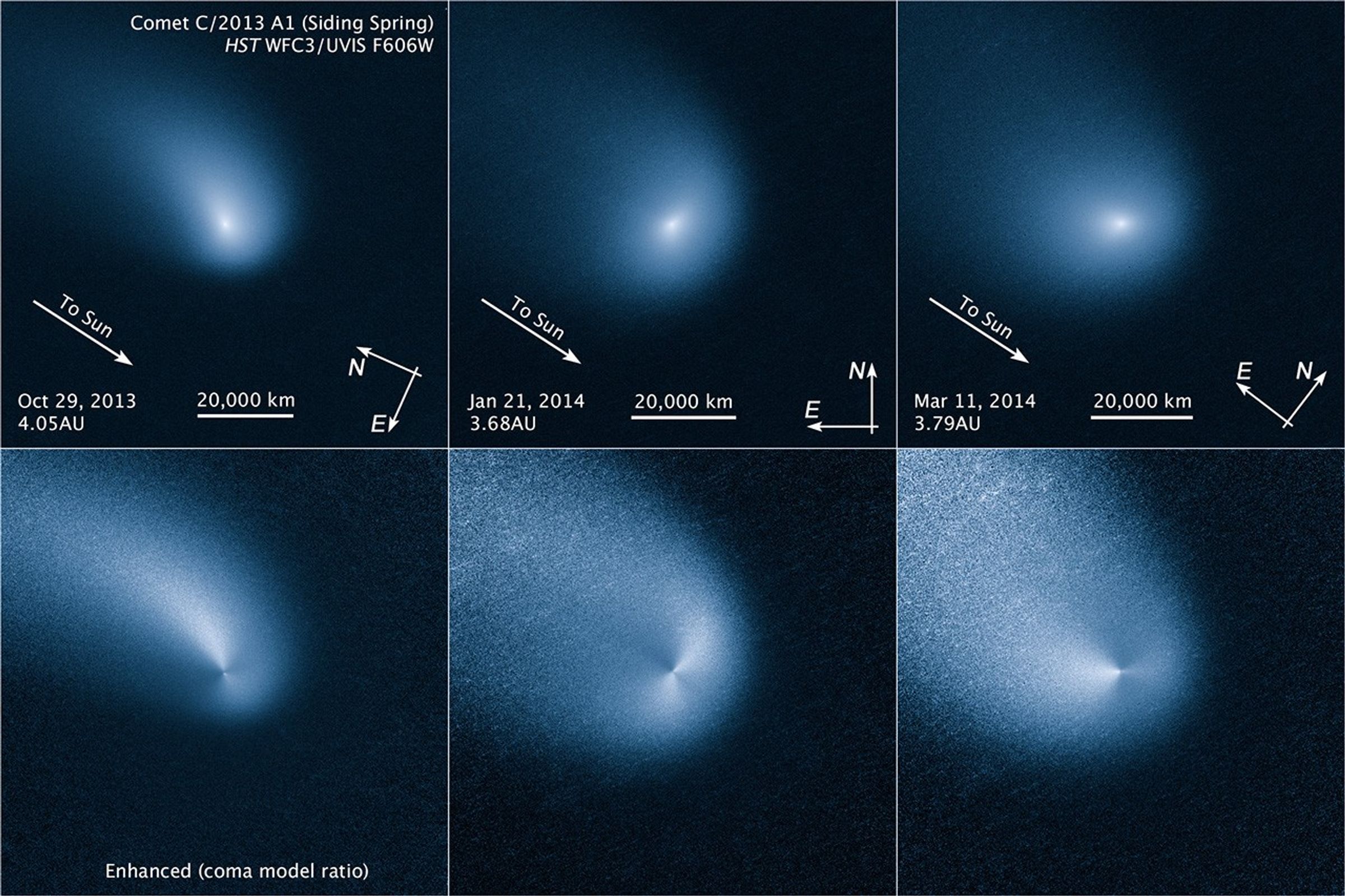1 min read
Hubble Sees Mars-Bound Comet Sprout Multiple Jets

[Left]
This is a Hubble Space Telescope picture of comet C/2013 A1 Siding Spring as observed on March 11, 2014. At that time the comet was 353 million miles from Earth. The solid icy nucleus is too small to be resolved by Hubble, but it lies at the center of a dust cloud, called a coma, that is roughly 12,000 miles across in this image.
[Right]
When the glow of the coma is subtracted through image processing, which incorporates a smooth model of the coma's light distribution, Hubble resolves what appear to be two jets of dust coming off the nucleus in opposite directions. This means that only portions of the surface of the nucleus are presently active as they are warmed by sunlight, say researchers. These jets were first seen in Hubble pictures taken on Oct. 29, 2013. The feature should allow astronomers to measure the direction of the nucleus's pole, and hence, rotation axis.
Discovered in January 2013 by Robert H. McNaught at Siding Spring Observatory in New South Wales, Australia, the comet is falling toward the Sun along a roughly 1-million-year orbit and is now within the radius of Jupiter's orbit. The comet will make its closest approach to our Sun on Oct. 25, at a distance of 130 million miles – well outside Earth's orbit. On its inbound leg, Comet Siding Spring will pass within 84,000 miles of Mars on Oct. 19, 2014 (less than half the Moon's distance from Earth). The comet is not expected to become bright enough to be seen by the naked eye.
An earlier Hubble observation made on Jan. 21, 2014, caught the comet as Earth was crossing the comet's orbital plane. This special geometry allows astronomers to better determine the speed of the dust coming off the nucleus. "This is critical information that we need to determine how likely and how much the dust grains in the coma will impact Mars and Mars spacecraft," said Jian-Yang Li of the Planetary Science Institute in Tucson, Ariz.
This visible-light image was taken with Hubble's Wide Field Camera 3.
About the Object
- DistanceDistanceThe physical distance from Earth to the astronomical object. Distances within our solar system are usually measured in Astronomical Units (AU). Distances between stars are usually measured in light-years. Interstellar distances can also be measured in parsecs.At the time of the Hubble observation on March 11, 2014, the comet was 3.28 astronomical units (305 million miles) from the Sun. The comet was 3.79 astronomical units (353 million miles) from Earth.
About the Data
- Data DescriptionData DescriptionProposal: A description of the observations, their scientific justification, and the links to the data available in the science archive.
Science Team: The astronomers who planned the observations and analyzed the data. "PI" refers to the Principal Investigator.The image was created from Hubble data from proposal 13610: J.-Y. Li (Planetary Science Institute), M. Kelley (University of Maryland), N. Samarasinha (Planetary Science Institute), C. Lisse (JHU/APL), T. Farnham and M. A'Hearn (University of Maryland), W. Delamere (Delamere Support Services), and M. Mutchler (STScI). - InstrumentInstrumentThe science instrument used to produce the data.HST>WFC3/UVIS
- Exposure DatesExposure DatesThe date(s) that the telescope made its observations and the total exposure time.March 11, 2014
- FiltersFiltersThe camera filters that were used in the science observations.F606W (V)
- Object NameObject NameA name or catalog number that astronomers use to identify an astronomical object.C/2013 A1 Siding Spring
- Object DescriptionObject DescriptionThe type of astronomical object.Comet
- Release DateMarch 27, 2014
- Science ReleaseHubble Sees Mars-Bound Comet Sprout Multiple Jets
- Credit

Related Images & Videos

Hubble Tracks Inbound Comet
This is a series of Hubble Space Telescope pictures of comet C/2013 A1 Siding Spring as observed on Oct. 29, 2013; Jan. 21, 2014; and March 11, 2014. The distances from Earth were, respectively, 376 million miles, 343 million miles, and 353 million miles. The solid icy nucleus...
Share
Details
Claire Andreoli
NASA’s Goddard Space Flight Center
Greenbelt, Maryland
claire.andreoli@nasa.gov

































